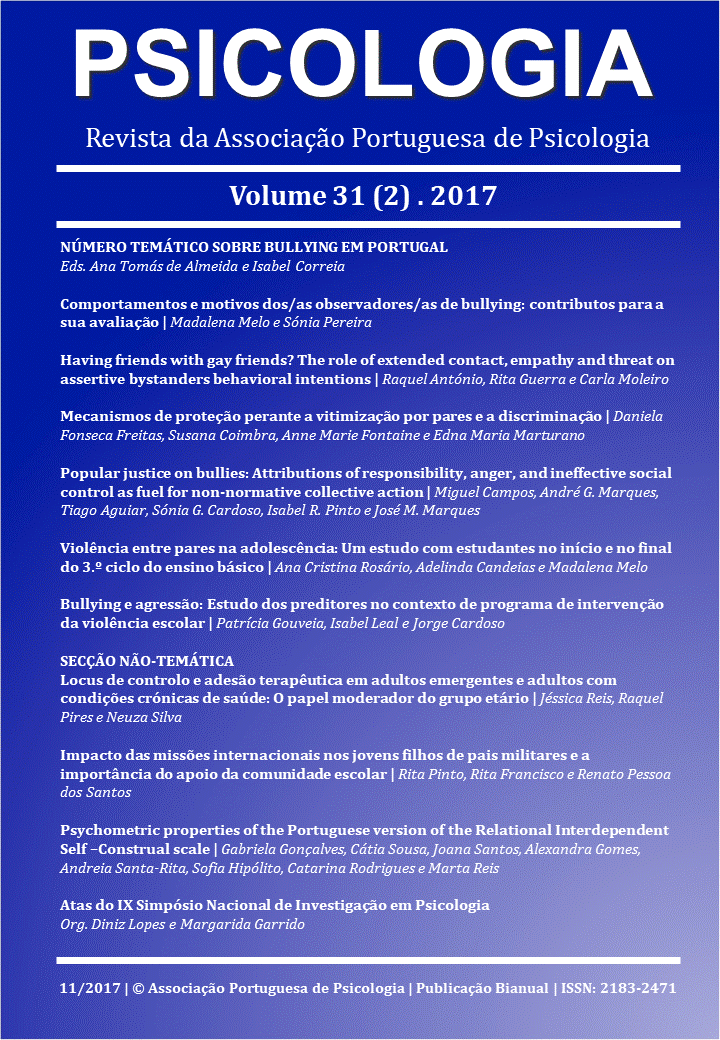Peer violence in adolescence: A study with students in the beginning in the end or the 3rd cicle of basic education
DOI:
https://doi.org/10.17575/rpsicol.v31i2.1153Abstract
This study aims at characterizing behaviours of peer violence, according to school level, gender and socio affective variables. Participants include a sample of 80 students attending the 3rd level of elementary education (grades 7 – 9), which were evaluated with QEVE, in two distinct moments: 7th and 9th grades. The results show that: i) the most frequent conducts of victimization and aggression are social exclusion and verbal aggression; ii) the victimization rates decrease from 7th to 9th grade although the aggression rates remain stable; iii) boys find themselves more involved in physical bullying situations than girls; vi) the felling towards school (i.e., school liking) and the perception of having friends are revealed has important protective aspects in victimization and aggression conducts. These results are suggestive of a differential educational intervention, oriented to socioemotional literacy, highlighting the role of peers in prevention of school violence.


